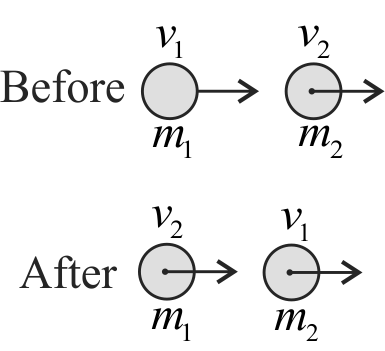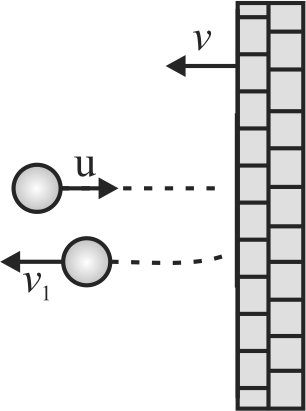355260 Two masses ' \(m_{1}\) ' and ' \(m_{2}\) ' moving with velocities ' \(v_{1}\) ' and ' \(v_{2}\) ' in opposite directions collide elastically and after collision masses ' \(m_{1}{ }^{\prime}\) and ' \(m_{2}\) ' move with velocity ' \(v_{2}\) ' and ' \(v_{1}{ }^{\prime}\) respectively. The ratio \(\left(\dfrac{m_{1}}{m_{2}}\right)\) is
355260 Two masses ' \(m_{1}\) ' and ' \(m_{2}\) ' moving with velocities ' \(v_{1}\) ' and ' \(v_{2}\) ' in opposite directions collide elastically and after collision masses ' \(m_{1}{ }^{\prime}\) and ' \(m_{2}\) ' move with velocity ' \(v_{2}\) ' and ' \(v_{1}{ }^{\prime}\) respectively. The ratio \(\left(\dfrac{m_{1}}{m_{2}}\right)\) is
355260 Two masses ' \(m_{1}\) ' and ' \(m_{2}\) ' moving with velocities ' \(v_{1}\) ' and ' \(v_{2}\) ' in opposite directions collide elastically and after collision masses ' \(m_{1}{ }^{\prime}\) and ' \(m_{2}\) ' move with velocity ' \(v_{2}\) ' and ' \(v_{1}{ }^{\prime}\) respectively. The ratio \(\left(\dfrac{m_{1}}{m_{2}}\right)\) is
355260 Two masses ' \(m_{1}\) ' and ' \(m_{2}\) ' moving with velocities ' \(v_{1}\) ' and ' \(v_{2}\) ' in opposite directions collide elastically and after collision masses ' \(m_{1}{ }^{\prime}\) and ' \(m_{2}\) ' move with velocity ' \(v_{2}\) ' and ' \(v_{1}{ }^{\prime}\) respectively. The ratio \(\left(\dfrac{m_{1}}{m_{2}}\right)\) is


